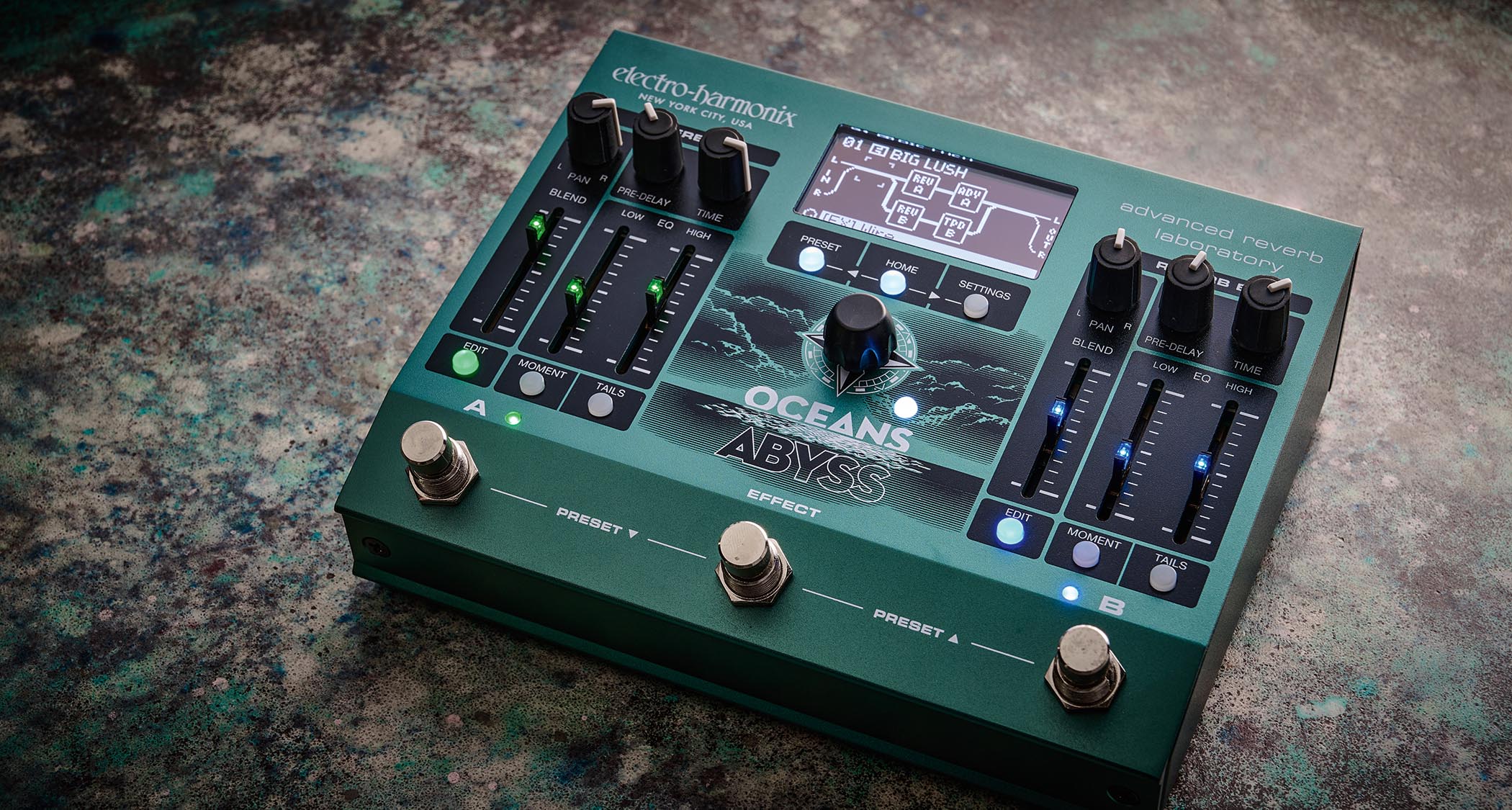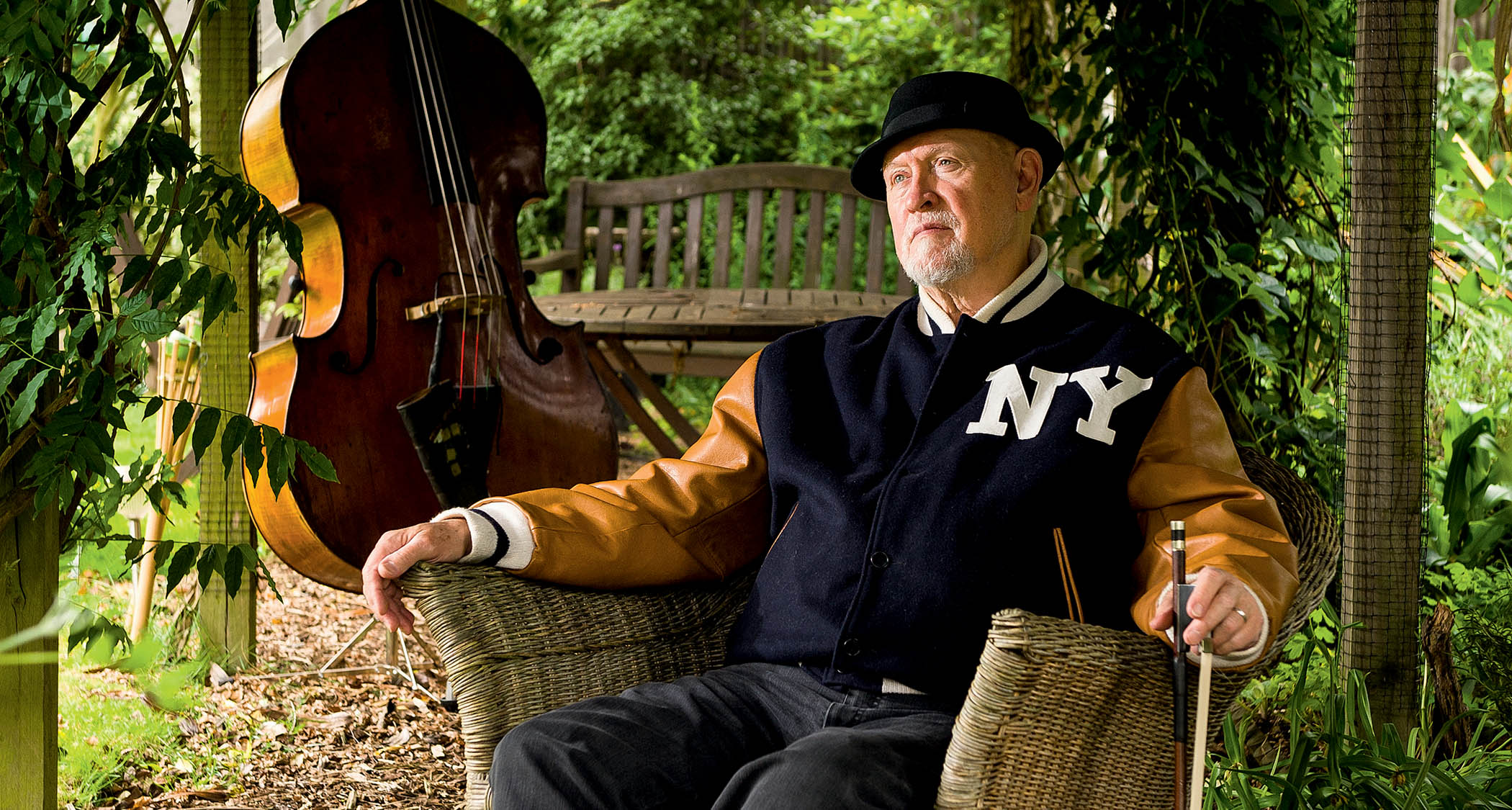Guitar World Verdict
As much a sound designer’s playground as a guitarist’s onstage resource, the Oceans Abyss offers enormous potential to sculpt some really esoteric sounds if you want to get into that, but it’s also a flexible single-box solution for providing a bunch of switchable reverbs, delays, modulations and more to get you through any gig.
Pros
- +
Not too massive in size.
- +
Customisable signal path.
- +
Effects loop.
- +
Varied reverb types.
- +
Range of effects other than reverb.
- +
Presets.
Cons
- -
Learning curve to get around the menus.
You can trust Guitar World
What is it?
While some players are totally sorted by having a spring reverb integral to their amp, there are plenty of others who embrace reverb as a creative effect, and many companies out there are ready to cater to those desires with a range of pedals that can supply all manner of ambiences.
To date, Electro‑Harmonix has been scratching that itch with its Oceans 12 pedal, and that dual stereo reverb now has a sibling in the form of the Oceans Abyss, which, as the name implies, takes a deeper dive into the world of ambience.
This triple-footswitch reverb pedal features two full-stereo reverb engines that can be combined into a signal path comprising up to eight blocks and encompassing several other effects including delay and modulation, all with a range of routing options.
Add a stereo send/return loop to incorporate other pedals to that signal path and EHX’s description of the pedal as an “advanced reverb laboratory” makes perfect sense.
Specs
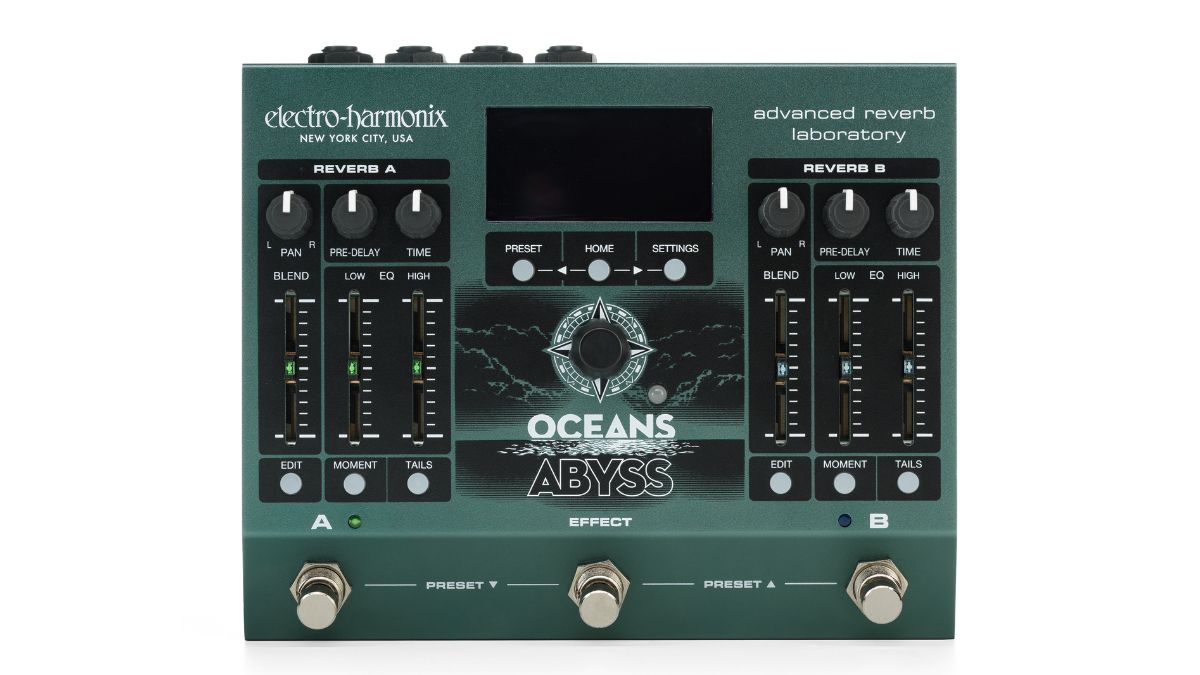
- PRICE: $495/£475
- ORIGIN: USA
- TYPE: Reverb pedal
- FEATURES: Buffered bypass, 128 presets, tap tempo
- REVERB TYPES: Room, Hall, Spring, Plate, Reverse, Dynamic, Auto-Infinite, Shimmer, Polyphonic, Resonant
- CONTROLS: NavCoder, Preset button, Home button, Settings button, Reverb A controls (Pan, Pre-Delay, Time, Blend, Low, High, Edit button, Moment button, Tails button) Reverb B controls (Pan, Pre-Delay, Time, Blend, Low, High, Edit button, Moment button, Tails button), Effect footswitch (bypass), Footswitch A, Footswitch B
- CONNECTIONS: Standard inputs (L & R), standard outputs (L & R), Standard TRS Send, Standard
TRS Return, EXP, Footswitch,
MIDI IN, MIDI OUT, USB - POWER: 9V DC adaptor (supplied) 500 mA
- DIMENSIONS: 180 (w) x 150 (d) x 65mm (h)
- CONTACT: Electro-Harmonix
Usability and sounds

The Oceans Abyss has a clearly laid out user interface: the essential hands-on controls for Reverb A are on the left; those for Reverb B are on the right. Between the two, there’s a display showing signal path and adjustable parameters, and a NavCoder knob with rotate, push and tilt actions that does all the hard graft of addressing what’s shown in the display and setting up your sound.
The reverb algorithms on offer are your standard Room, Hall, Spring and Plate, while Reverse, Dynamic, Auto-Infinite, Shimmer, Polyphonic and Resonant make up the more esoteric contingent.
Any sounds you create can be saved to 128 preset locations, and the unit comes with 100 of those already loaded with factory-programmed sounds.
The full architecture of the signal path is that of two rows of four effects blocks – the top row associated with Reverb A, the bottom with Reverb B – with loads of different serial and parallel connections available between them, although you can also have just a single linear chain with both Reverb A and Reverb B blocks in it.
All the latest guitar news, interviews, lessons, reviews, deals and more, direct to your inbox!
Furthermore, a preset doesn’t have to be centred around reverb. In fact, you don’t have to have a reverb effect block at all. While there’s an overall effect bypass footswitch, the A and B footswitches bring the A and B associated blocks in and out.
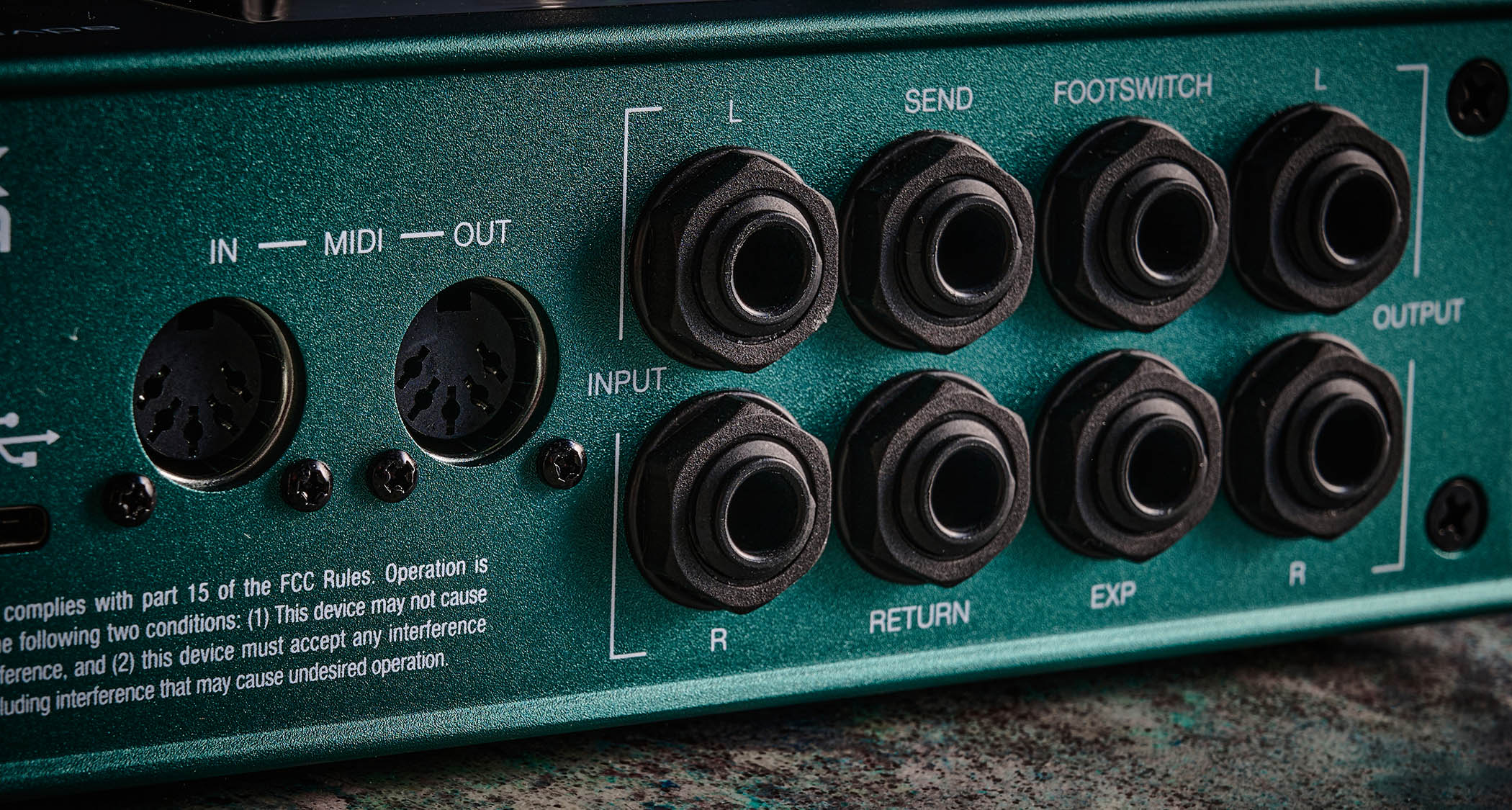
The reverb algorithms on offer are your standard Room, Hall, Spring and Plate, while Reverse, Dynamic, Auto-Infinite, Shimmer, Polyphonic and Resonant make up the more esoteric contingent.
Other blocks in the chain can deliver delay (Basic, Analog and Tape), modulation (Tremolo, Chorus, Flanger and Phaser) or utility effects (Graphic EQ, Saturation, Bit Crusher, Volume and the send/return effects loop).
Besides the hands-on dedicated knobs and sliders for the two reverbs, there are other adjustable reverb parameters available in the menu, plus parameters for all the other effects blocks. To set up and edit your sounds you’ll need to get the hang of getting around the screens, menus and parameters with the NavCoder, but there’s a useful Home button to take you back to the main screen at any point.
The complexity here would, of course, benefit from a computer-based editor/librarian, and hopefully EHX will have its forthcoming USB-connected EHXport app up and running to take care of all that by the time you read this.
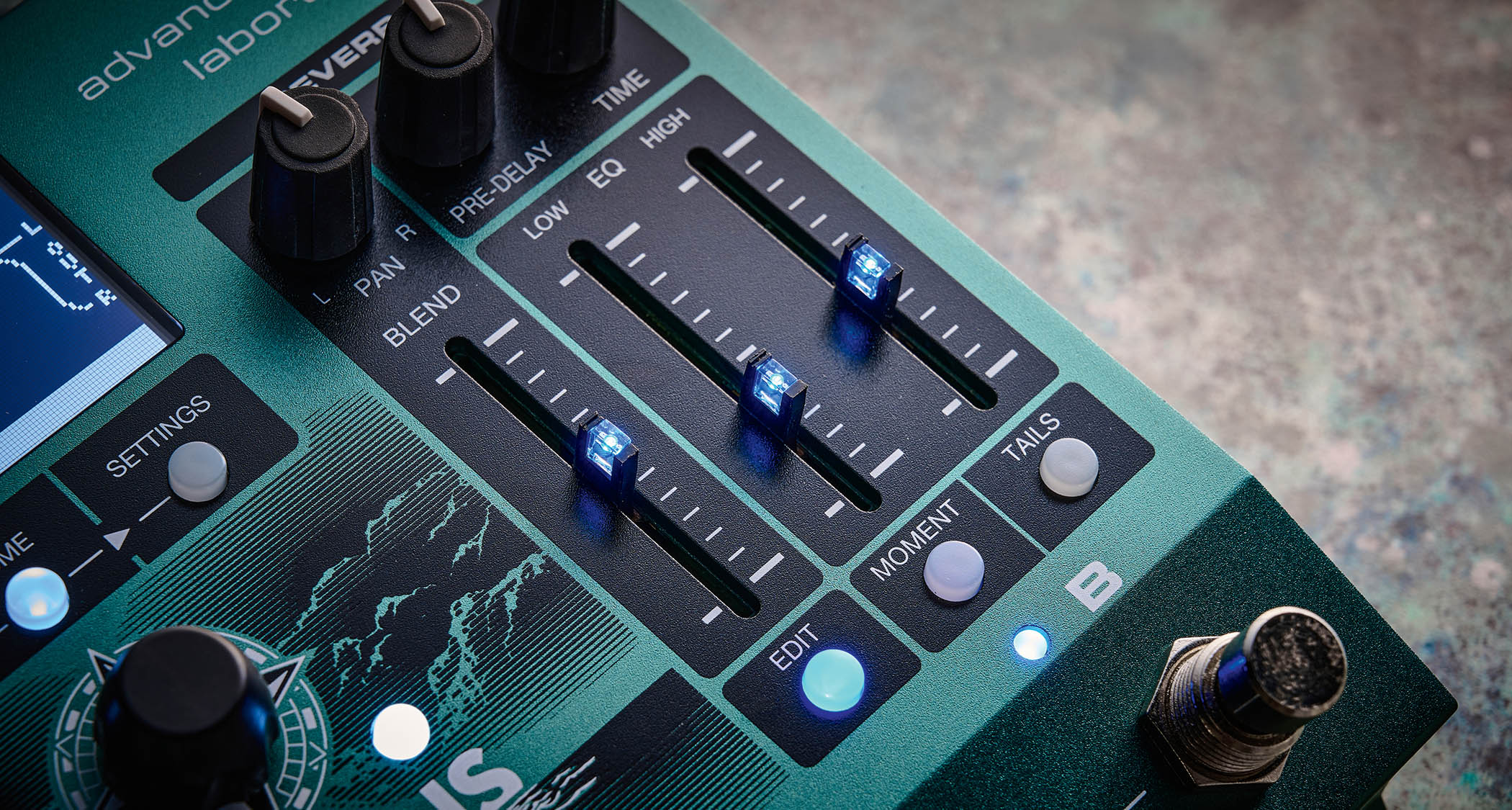
As usual with a pedal like this, trying out all the factory presets is the best way to get the measure of what it can do, as well as giving you some useful starting points for creating your own sonic preferences.
There’s plenty to take in: from basic meat-and-potatoes reverbs utilising a single effects block, through simple combinations such as a delay block feeding a reverb block, to esoteric ambiences taking full advantage of routing the signal through numerous blocks.
The standard reverbs all deliver the sense of space that you’d expect and are easily tweaked to get them how you need them. The Spring reverb can get the ‘drip’ that surf guitarists seek out, while the other reverbs have plenty of creative potential with liberal amounts of fairy dust in the likes of the Shimmers’s octave-shifted wash and the dual bidirectional pitch shifts of the Symphonic reverb.
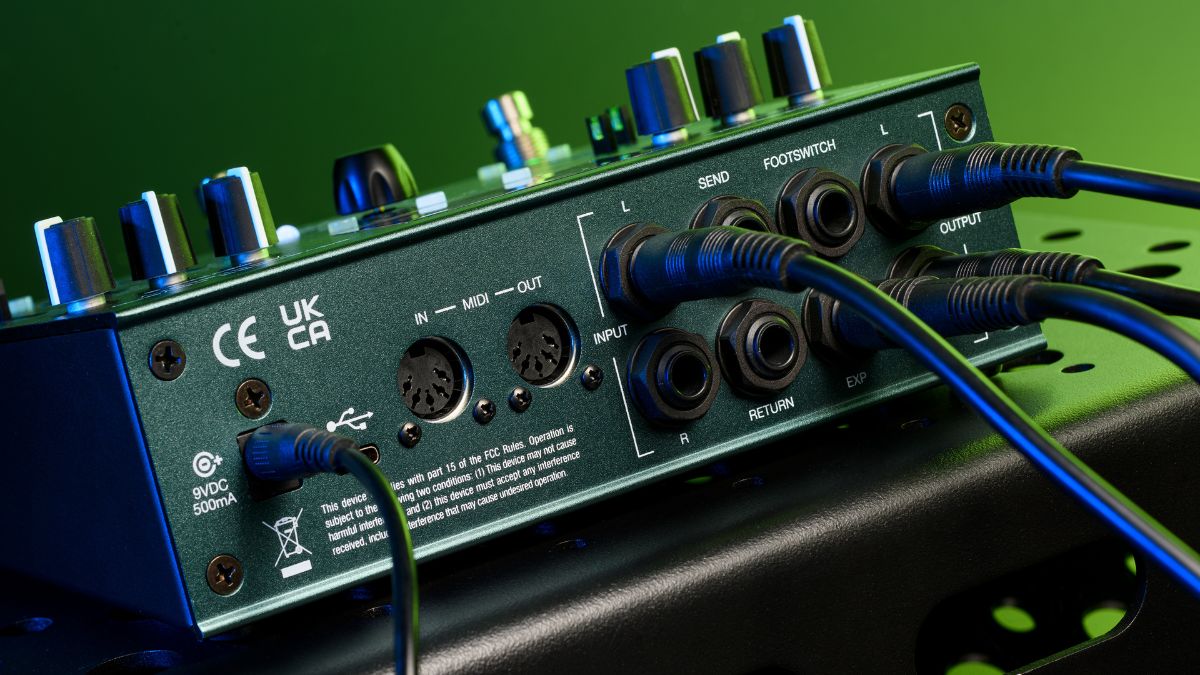
The delays and modulations amply cover familiar territory and – while modulation, delay and reverb combinations may be standard fare in some quarters – you also have the saturation and bitcrusher blocks here to grunge things up. Two saturation blocks in series make a convincing Big Muff, especially coupled with a Graphic EQ block to really focus the frequencies.
Referencing other EHX pedals, you get Small Stone and Memory Man presets here, and there’s some creative use of just delay in two presets that utilise all eight blocks to construct some really interesting reverb effects – one stacking up eight blocks of the Analog delay type all feeding into each other, the other similarly using blocks of Tape delay.
For onstage use you can swiftly move from preset to preset with presses on the A or B footswitch simultaneously with the effect footswitch, or, to make things really simple, if you just want to use two different sounds during a gig, you could set them up as parallel A and B chains in a single preset and engage them as needed. There’s also a press-and-hold function to trigger infinite sustain for the associated reverb.
There’s provision to incorporate up to three external footswitches and assign them to a number of functions such as loading presets, tap tempo and even sending an impulse, which simulates kicking a spring tank! You could also add an expression pedal for control over parameters in any effects block, and there’s comprehensive MIDI capability for recalling presets, control over nearly every available parameter, and clock sync.
Verdict
Verdict: ★★★★½
The big-box reverb has become a thing in recent years and this latest Electro-Harmonix entry into the area doesn’t disappoint: from the simplest reverb to complex shifting ambiences, there’s something here for everyone.
Guitar World verdict: As much a sound designer’s playground as a guitarist’s onstage resource, the Oceans Abyss offers enormous potential to sculpt some really esoteric sounds if you want to get into that, but it’s also a flexible single-box solution for providing a bunch of switchable reverbs, delays, modulations and more to get you through any gig.
Hands-on videos
EHX
John Nathan Cordy

Chords of Orion
- Electro-Harmonix Oceans 12 review
- This article first appeared in Guitar World. Subscribe and save.
Trevor Curwen has played guitar for several decades – he's also mimed it on the UK's Top of the Pops. Much of his working life, though, has been spent behind the mixing desk, during which time he has built up a solid collection of the guitars, amps and pedals needed to cover just about any studio session. He writes pedal reviews for Guitarist and has contributed to Total Guitar, MusicRadar and Future Music among others.
You must confirm your public display name before commenting
Please logout and then login again, you will then be prompted to enter your display name.
